A Full Range of Asbestos Analyses
AMA Analytical Services, Inc. provides a full range of asbestos analyses on all matrices. Air, Bulk, Dust, Talc, Water…What you need, when you need it.
Transmission Electron Microscopy (TEM)

The Transmission Electron Microscope is one of the most powerful tools that we have available to us for asbestos analysis. TEM analysis can be conducted on a variety of matrices and is often times the most definitive and legally defensible technology available.
| Air Samples | Water Samples | Surface Dust Samples |
| AHERA | NY State ELAP 198.2 | Surface Vacuum – Quantitative by ASTM D5755 |
| NIOSH 7402 | EPA 100.1 | Surface Wipe – Quantitative by ASTM D6480 |
| EPA Level II | EPA 100.2 | Surface Vacuum/Wipe – Qualitative (Presence/Absence) |
| Qualitative (Presence/Absence) |
Polarized Light Microscopy (PLM)
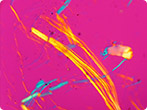 |
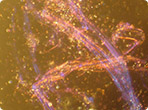 |
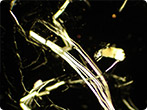 |
PLM analysis is the industry standard for the detection of asbestos in building materials. While it may be insufficient for certain types of materials, we are able to provide accurate and definitive results without the use of additional analytical techniques in the majority of instances.
Bulk Samples
- EPA 600R-93/116 – Quantification by Visual Estimate
- EPA 600R-93/116 – Quantification by Point Count (400 pts)
- NY State ELAP 198.1 Friable Stratified Point Count
Non-Friable Organically Bound Material (NOB)
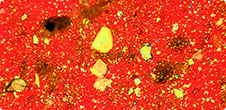 |
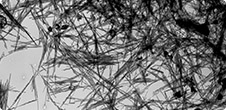 |
NOB materials can be problematic when analyzed using standard PLM methods. Problems with matrix interference and/or resolution limitation can be resolved using the methods below.
Bulk Samples
- PLM Analysis by NY State ELAP 198.6
- TEM Analysis by NY State ELAP 198.4
- Chatfield Method
Vermiculite
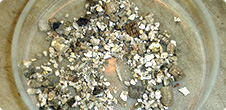 |
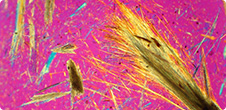 |
AMA offers a modified version of a method that the EPA is researching for vermiculite analysis (Alexandria Method a.k.a Cincinnati Method).
Samples are analyzed by macroscopic examination for large fiber bundles, PLM analysis for identification of fibers, and/or TEM analysis for crystallographic and chemical makeup of fibers. Results are reported qualitatively for the presence or absence of Libby Amphiboles.
Phase Contrast Microscopy (PCM)
PCM Analysis is typically used to determine exposure during work practices. Since, however, it is one of the oldest analytical methods available, it is often used for other purposes, including clearance.
Air Samples
- NIOSH 7400



